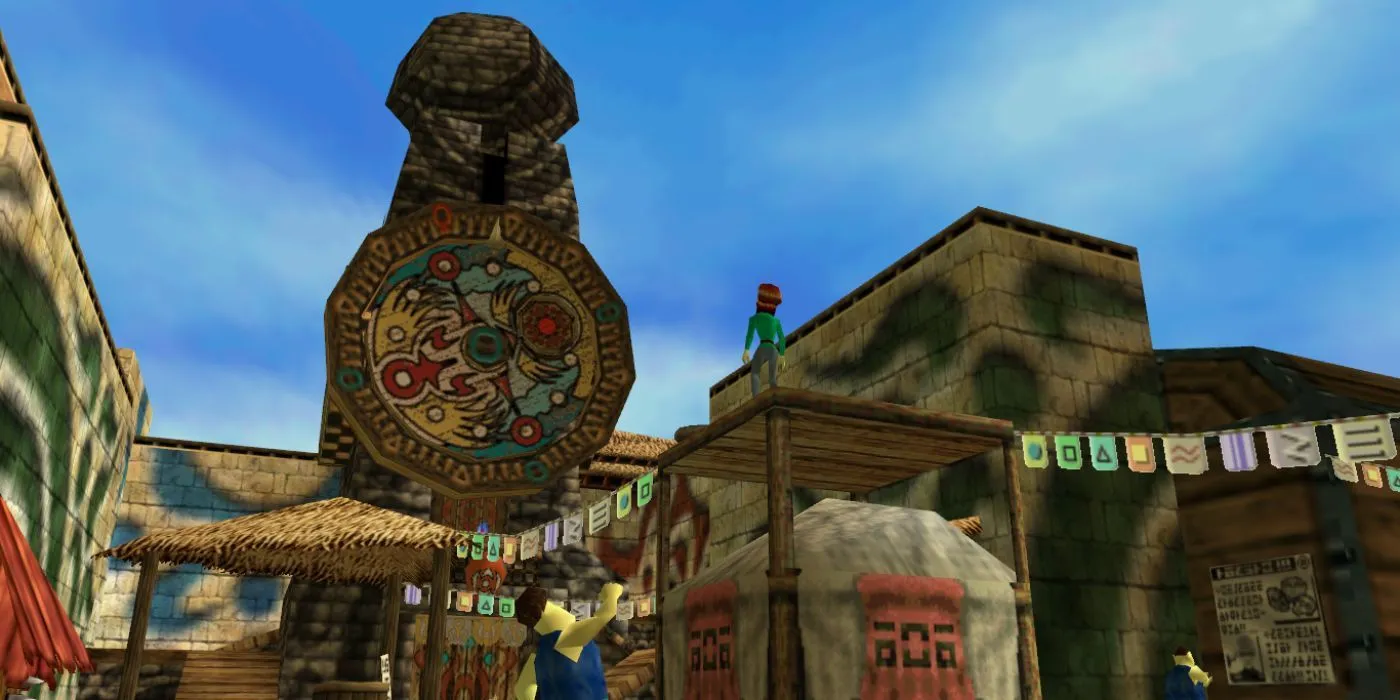
The Legend of Zelda franchise has introduced numerous parallel worlds throughout its many titles. Each world has its own distinct charm and backstory, yet there’s an ongoing conversation about the potential benefits of revisiting these classic settings rather than introducing entirely new ones. Given the wealth of imaginative locales already established, it would be a missed opportunity to let them gather dust.
While Hyrule is often regarded as the central hub of the series, the game world encompasses a variety of other significant locations. Some of these, like Holodrum, serve as neighboring realms, whereas others, such as Termina, exist in alternate dimensions and can only be accessed through unique circumstances. Termina, with its exploration of grief in Majora’s Mask, is one of the most recognizable examples of this phenomenon, illustrating how these parallel worlds can differ greatly in mood and scope.
Revisiting Established Dimensions in Future Zelda Games
New Possibilities Await in Parallel Worlds

The potential to revisit past dimensions in The Legend of Zelda offers numerous advantages. Nostalgia plays a vital role in drawing players back to beloved settings like Termina. There’s great anticipation in observing how these worlds have evolved since their last outings; many of them echo elements of Hyrule itself, with Lorule acting as a darker reflection of the kingdom. The integration of these themes could yield rich narrative layers in contemporary titles like Tears of the Kingdom.
Both Termina and Lorule present opportunities to encounter alternate versions of established characters, each with potentially contrasting traits, thus providing engaging story arcs that the franchise is known for. Additionally, technical advancements—including what we can expect from the much-anticipated Switch 2—could allow for a reimagined exploration of these landscapes through enhanced graphics and gameplay mechanics. The chance to breathe new life into established worlds not only satisfies fan nostalgia but also encourages the revival of unique gameplay elements, such as those found in the World of the Ocean King.
Among the various worlds, the Sacred Realm deserves particular attention. As the traditional home of the Triforce, reintroducing it in future narratives would resonate well, particularly in games that center around this iconic relic. Beyond the Sacred Realm, many other alternate dimensions could seamlessly integrate into upcoming plots, each adding depth and richness to the ongoing saga.
The Abundance of Parallel Worlds in Zelda
Caution Against Over-Saturation of Themes



With realms like the Sacred Realm and its chaotic counterpart, the Dark World, there is a notable number of significant alternate dimensions in the Legend of Zelda series. Other examples include Termina, the Twilight Realm, and Lorule. The most recent addition is the Still World and the World of the Minish, which has the potential to shine anew in future adventures. Nonetheless, it is evident that while new dimensions remain appealing, exploring existing ones could provide fresh and engaging experiences.
As compelling as these alternate realities can be, the franchise risks feeling overstretched if it consistently introduces new dimensions that overly resemble previous settings. For instance, both Lorule and the World of the Ocean King share similar mechanics mirroring Hyrule and the Great Sea, respectively. Introducing yet another conventional dimension without exceptional distinction may lead to a sense of redundancy.
However, it’s essential to acknowledge the diversity woven into these worlds. While certain thematic elements may overlap, each realm possesses unique attributes that can maintain interest even amidst reuse. Additionally, the dynamic nature of these worlds means that, similar to Hyrule, they can evolve and change, offering novel experiences upon subsequent visits.
Maximizing the Value of One-Off Worlds
Exploring Untapped Potential in Established Settings

Given the considerable effort put into crafting these unique parallel worlds, it would be a disservice for them to remain one-off experiences. As the series progresses, the possibilities for exploration expand not just within Hyrule but across other realms as well. Each location has tremendous potential waiting to be unveiled, far surpassing what can be achieved in a solitary game. Developing sequels or follow-up titles would greatly benefit from the rich histories and narratives these worlds offer.
Returning to previously explored realms would allow for the revival of beloved gameplay mechanics while also facilitating unique storylines that enrich the overall narrative tapestry. For instance, if the Twilight Realm and Hyrule were to reconnect, it could open up new avenues to explore, such as the fate of Midna following the closure of Twilight Princess. Similarly, understanding that the World of the Ocean King exists independently of the Great Sea allows for greater narrative freedom—showing how both worlds evolve differently.
Despite the expansive lore that has developed over the years, the franchise has underutilized much of its rich worldbuilding. Many fascinating realms have been introduced only to languish as one-off experiences. By capitalizing on the advancements that the Switch 2 is expected to bring, The Legend of Zelda series could greatly benefit from revisiting and expanding upon its legendary parallel worlds—allowing for innovative directions and vastly enriched storytelling.




Leave a Reply